Florida A1A is an asphalt ribbon that follows the Atlantic Coast, sometimes hugging the beach, the length of this very long state.
There are lovely sections up and down the coast, but there are also traffic-clogged stretches where highrises line both sides of Florida A1A.
What is the best section of A1A? For beauty and history and its lack of dense development, the 30 mile stretch of Florida A1A between Ormond Beach and Matanzas Inlet is unsurpassed.
Here, you can drive 20-some miles without a traffic light and find nearly empty beaches with free parking. As you head north, you enter a canopy of magnificent live oak trees that is a route through a Florida you probably thought was gone forever.
Beyond the scenic beauty, though, this area has so many interesting state parks and historic sites that you can take all day or several days to explore this stretch of Florida A1A.
Note: Sections of this road washed away during 2022 hurricanes but have been repaired.
Here are highlights of this drive on Florida A1A, starting at the south end at Ormond Beach.
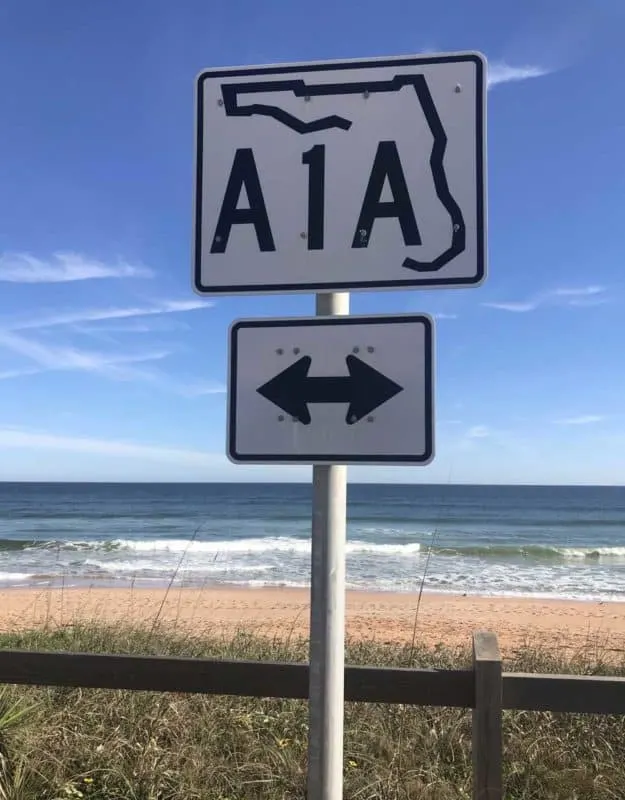
Florida A1A: Ormond Beach, heading north
Ormond Beach is just 5 miles north on A1A from Daytona Beach, but has a small town vibe and a historic feel.
Starting at Ormond Beach, Florida A1A is also part of another fabulous scenic drive, the 34-mile-long Ormond Scenic Loop and Trail. Depending where your based, you can plan a route that encompasses them both. For this guide, we’re sticking to A1A, but highly recommend this loop trail if you’re in the area.
In Ormond Beach, there are two stops moments off A1A to consider .
First, a few blocks west of A1A, there is a beautiful public park at the Halifax River/Intracoastal Waterway around the historic home of John D. Rockefeller. The Casements, now a cultural center for Ormond Beach, is open for tours. Even without taking time to tour, the 1910 building is worth a stop because of the public park space with landscaping and fountains built between it and the river. It’s a great place for a picnic or a short stroll.
Second, Tomoka State Park is 3 miles north of the Casements through a lovely residential neighborhood along the west side of the Halifax River. Here’s a guide to Tomoka State Park, a good place to stroll, picnic, paddle and bike. The Tomoka Outpost concession at the boat ramp offers rentals of canoes, tandem and solo kayaks.
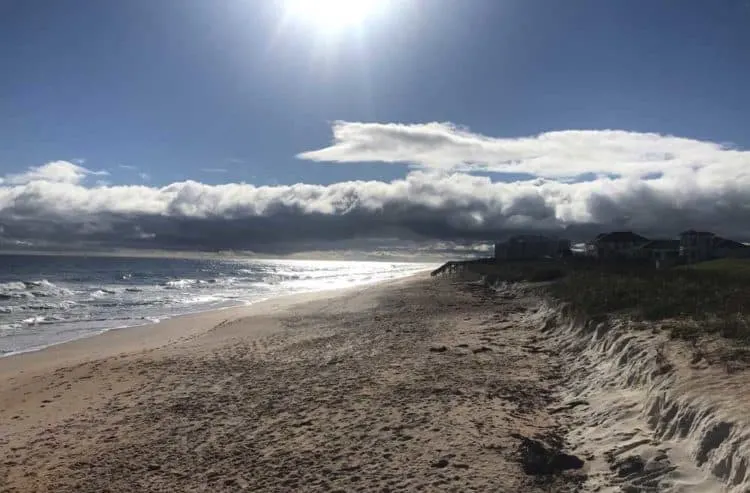
Florida A1A: The best beach views begin here
Once you leave Ormond Beach heading north on A1A, you only drive 3 miles before A1A returns to what I believe is its rightful place – right along the beach, with wide views of the dunes, sand and surf.
As A1A rejoins the beach, you come to the first of many opportunities to park and walk along the beach, Al Weeks Sr. North Shore Park. Like many places along this section of Florida A1A, parking is delightfully free. The park, 1631 Ocean Shore Blvd., Ormond Beach, has bathrooms, benches and a short boardwalk with a railing overlooking the beach.
Beaches here are so hard-packed that walking on them is like walking on a sidewalk, making them ideal for people (like me) who love long strolls along the surf.
You’ll note that the beaches here look like they’ve been sprinkled with cinnamon. The coral color comes from coquina, a soft rock made of ancient marine reefs and limestone that was used to build historic Castillo San Marco in St. Augustine, among other buildings. (This coquina crops up at some spots: Look below for Washington Oaks Gardens State Park for a good stop to view these spectacular outcroppings.)
If you want to take a 1-mile walk from this park, you can reach the next interesting point along Florida A1A, the World War II watchtower. (The watchtower makes a nice destination for a walk plus it has no parking, so this is one way to get close to it.)
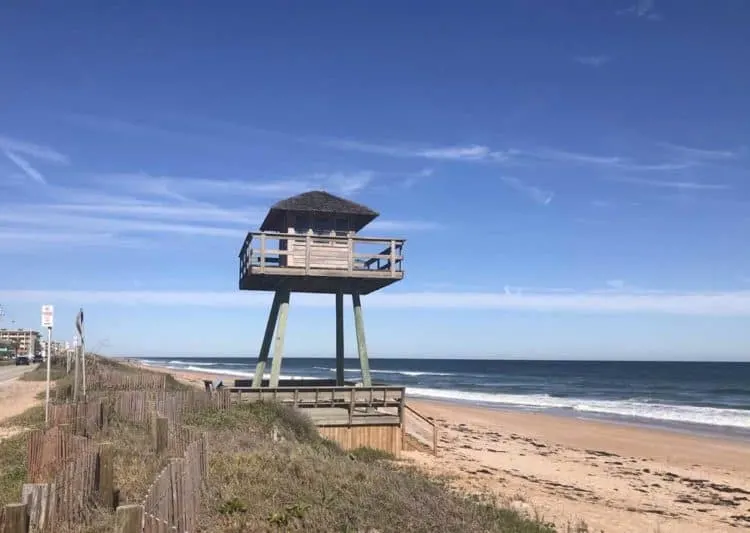
Florida A1A: World War II watchtower
Most people whiz right past this spot, but if you like historic sites, it’s worth pausing.
Tucked along the beach at 2269 Ocean Shore Blvd. is a historic World War II submarine watchtower built in 1942. More than 15,000 towers like this were built along the coast (equating to one every 6 miles) but few remain.
These towers were staffed by civilian volunteer “spotters,” who were part of the Ground Observation Corps, watching for German airplanes, submarines and infiltrators. (Little known history: There WERE German spies who came ashore Florida beaches.)
You can’t climb the watchtower, but good signage helps you feel a little warm and patriotic thinking about the volunteers who spent hours here watching for the enemy 75 years ago.
There is no parking in front of it or across the street, but for the moment, there is a vacant lot on the opposite side where it seemed OK to park. (Well, we did, briefly.)
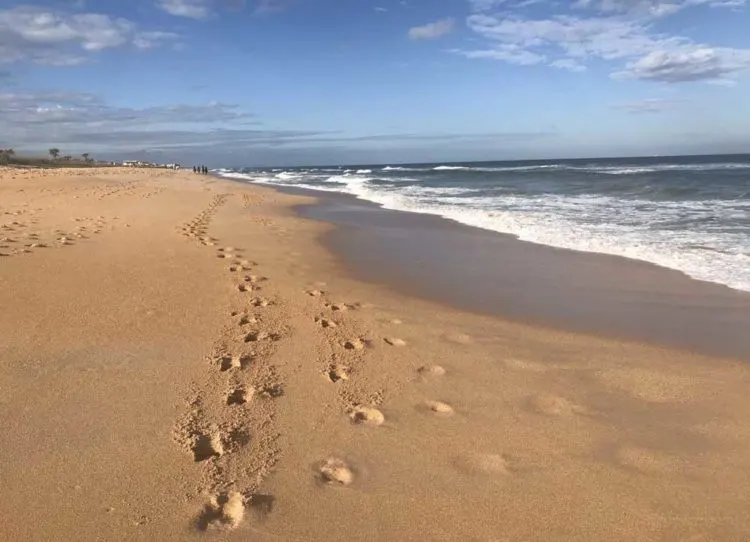
Florida A1A: North Peninsula State Park and Gamble Rogers State Park
As you continue north on Florida A1A, you come to two more state parks. Their presence results in expanses of preserved land here, from the ocean to beyond the Intracoastal. (The Intracoastal Waterway is the Halifax River in Ormond Beach, but is the Matanzas River in Flagler Beach and points north.)
North Peninsula State Park contributes almost 3 miles of unspoiled beach. If you go west a short distance on High Bridge Road (which, incidentally, is the route of the Ormond Scenic Loop and Trail), you come to Smith Creek Landing on the Intracoastal, where you can picnic and take the 2-mile-long Coastal Scenic Trail. There is no admission fee at this park.
Gamble Rogers State Park is a small state park primarily known for its beautiful beaches and campgrounds that are especially popular with RV campers. Admission is $5 per vehicle.
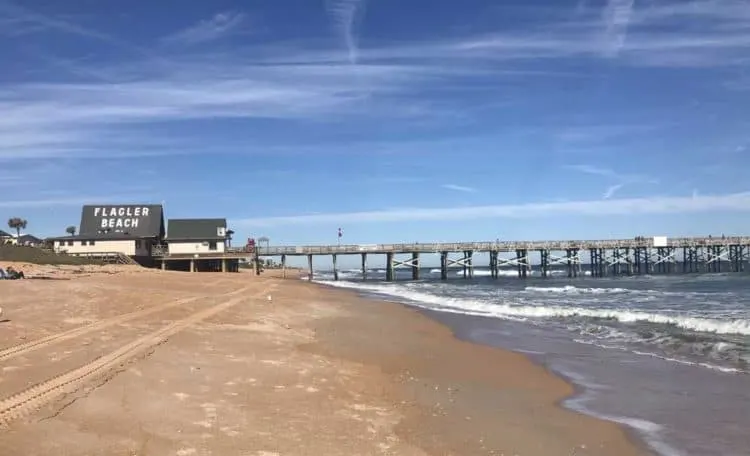
Florida A1A: Flagler Beach
Heading north, you pass through the cool little beach town of Flagler Beach, a low-rise Old Florida seaside strip with some good beachfront restaurants.
In Flagler Beach, you can still snag a free parking place on A1A next to the beach.
The “downtown” is anchored by the fishing pier, built 80 years ago and rebuilt after several hurricanes. The pier was again damaged by hurricanes in 2022 and is will be closed for several years for rebuilding. This time, it will be higher, wider and built from concrete. Remaining open, however, is an outdoor bar and an indoor restaurant on the pier with outstanding views. Additional restaurant recommendations and details are in our Flagler Beach guide.
As you travel north from Flagler Beach, the Atlantic continues to be easy to view, and another good stop to walk on the beach or use the restroom is Varn Park, where parking is free. (We loved the pavilion, which looks mid-century modern, though we couldn’t find any information on it.)
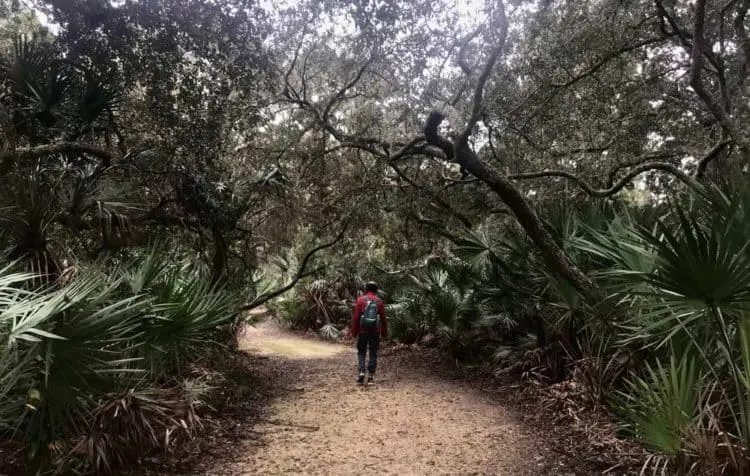
Florida A1A: Under the canopy of ‘the Hammock‘
After A1A northbound crosses the Flagler Beach city limits, mansions start filling the oceanfront side of A1A. In a few miles, a curve away from the beach takes you through the most Old Florida section of A1A, through a forested area called the Hammock.
In this section, A1A is lined with thick forest and huge moss-draped oak trees. There is a paved bike trail alongside the highway and several spots to stop if you’re looking for a break. (If you bring your bikes, I recommend using this trail to explore this stretch of A1A and the small roads that lead off it to the beach.)
At Jungle Hut Road (named after an old tourist souvenir shop), if you go east, you’ll come to Jungle Hut Park, where a 1-mile hiking trail loops through beautiful hardwood forest. At the end of that road, there’s free parking at a small beach park.
Similarly, 16th Road East ends at the beachfront Old Salt Park, again with free parking and a spectacular beach, and Mala Compra Road ends at the Mala Compra Beach. We especially enjoyed Mala Compra Beach because this is designated as an equine area and a local outfitter, Equestrian Adventures of Florida, offers beachfront horseback trail rides. (You must reserve in advance.) We loved watching the horses on the sand (where the guides also do cleanup duty after the horses.)
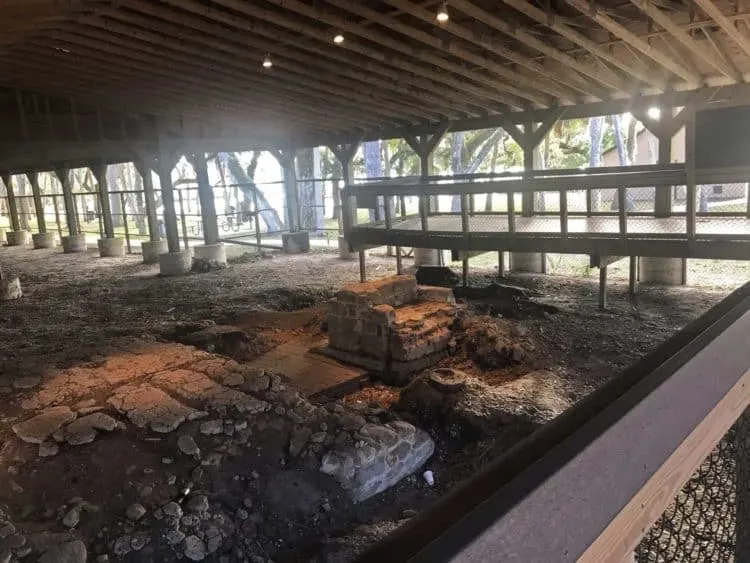
Florida A1A: Make a stop at Bing’s Landing
My best tip in this entire article may be to recommend Bing’s Landing at Mala Compra Road.
You wouldn’t know it from A1A, but it’s an exceptional historical spot with beautiful views of the Matanzas River. As you drive by, you might think it is just a boat launch with a big parking lot, which it also is.
But this park has so many things going for it, including a popular waterfront restaurant called Captain’s BBQ, which earns 4 ½ stars on Yelp and TripAdvisor.
The park also has shaded picnic tables and piers with great viewing spots for the Matanzas River, where it is common to see dolphin and the occasional manatee. There is even a short trail on the south end end of the park.
What’s exceptional about the park, though, is the visible archaeological site with excellent interpretation here. Under a big covering surrounded by an elevated boardwalk, you look down into the excavated site of the Mala Compra Plantation house, active from 1816 until it was burned down in the Second Seminole War in 1836.
Extensive signage explains who owned the plantation (the country’s first Hispanic Congressman, Joseph Marion Hernández) and provides background on the Seminole Indians. There is information on the enslaved people who lived here, but the treatment of this history falls a bit short.
The strength of the exhibit is your ability to peek into an archaeological site and the explanation about what was found here.
You’d expect an exhibit like this in a state or national park, but with minimal signage on A1A, many do not know it’s even here.
Mala Compra, by the way, means “bad bargain.” (Things didn’t end well here, so maybe it was.)
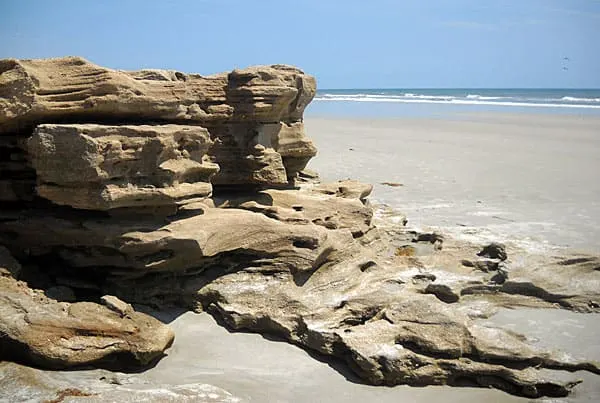
Florida A1A: Washington Oaks Gardens State Park is worth a stop
Washington Oaks Gardens State Park, which is just a mile north of Bing’s Landing, is one of my favorite little-known state parks.
There are two sides to Washington Oaks Gardens, quite literally.
On the west side of A1A, the park offers lovely formal gardens — ancient spreading oak trees, a meandering waterway fed by a clear spring, plantings of roses and azaleas and a gazebo.
On the east side of A1A is one of the most unusual beaches in Florida. There is barely a sign; the road to the beach references only the “Florida scrub” habitat adjoining the beach. But if you did your research (or read Florida Rambler), you know that the beach at Washington Oaks is lined with coquina rocks carved by the elements into swirls and bowls and all sorts of fantastical shapes.
Read more about Washington Oaks Gardens State Park, in this Florida Rambler story.
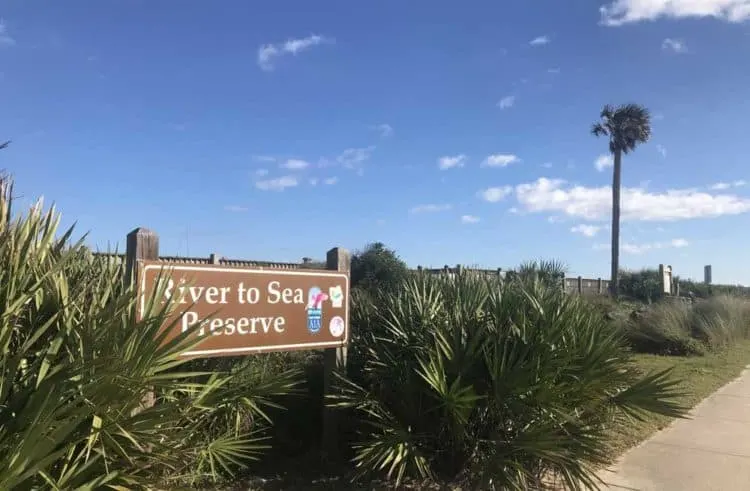
Florida A1A: Marineland and the River to Sea Preserve
Just over 2 miles north, you come to a complex with a rich history where you have another excellent opportunity to admire the dunes and beach.
Marineland opened in 1938 primarily to film underwater scenes for television and motion pictures. Housing marine creatures, the facility was on the forefront of understanding the care and training of dolphins. After World War II, as tourists drove down A1A into Florida, Marine Studios transformed into Marineland, and became one of the state’s top tourist attractions in the 1960s and 1970s.
Today it is owned by the Georgia Aquarium and specializes in human-dolphin interaction. Here’s a Florida Rambler story about the history of Marineland.
Immediately north of Marineland is Flagler County’s new River to Sea Preserve. The main attraction is a boardwalk atop the sand dune bluff with excellent signage about the region. There’s a big parking lot (free) with restrooms, making it an ideal stop when cruising A1A.
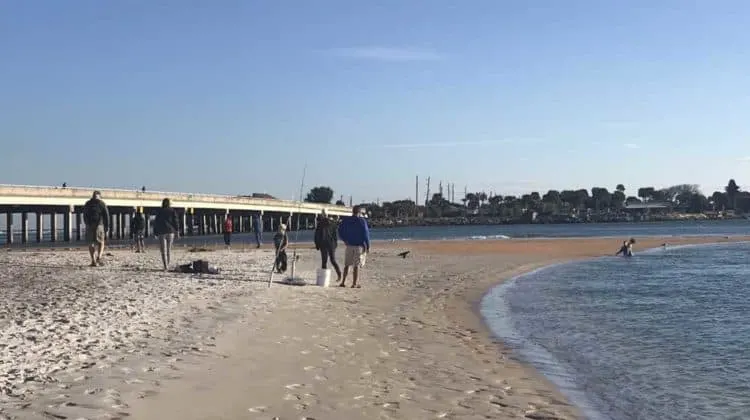
Florida A1A: Matanzas Inlet
The final 2.5 miles of our recommended section of A1A takes you to the last great stop, the Matanzas Inlet. With its long bridge and views of undeveloped beach and lagoon lands, the inlet is one of the most beautiful scenes along A1A. It’s worth stopping here for two reasons.
- There’s a free boat trip across the lagoon to visit and tour Fort Matanzas National Monument. The 1742 Spanish fort, a property of the National Park System, and the accompanying ferry is operating at a reduced schedule and operates Wednesday to Sunday only.
- The parking lots on both sides of A1A give you access to the peninsula that wraps around A1A at the north end of the inlet. There’s a broad beautiful beach here and you can stroll along the beach and under A1A to appreciate the views of the Atlantic and over the waters of the inlet, with the small fort off in the distance. It offers a spectacular view at sunset and dolphins are often spotted fishing in the waters of the inlet.
The Matanzas Inlet marks the end of the most scenic stretch of A1A. North of here, extensive development around St Augustine has robbed the road of its original character or beauty.
We do recommend you continue into St. Augustine, the oldest city founded by Europeans in the United States and home to many interesting historic and natural attractions. Here are 10 things to do in St. Augustine for nature and history lovers.
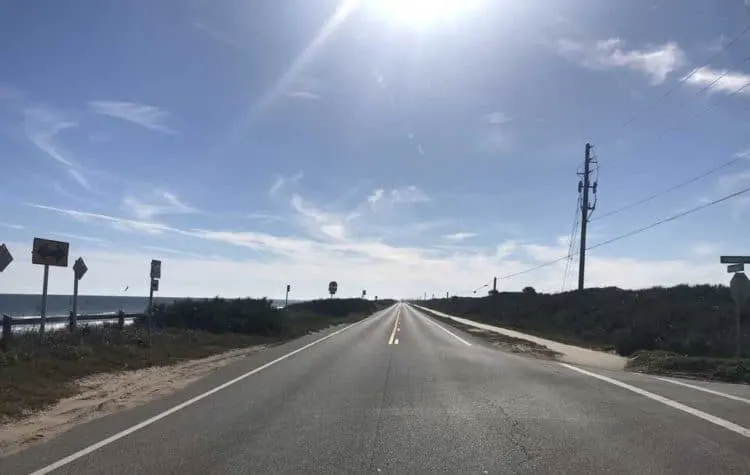
More about Florida A1A
Here’s a map of this section of Florida A1A
A group of businesses and residents are working to preserve this stretch of Florida A1A. Friends of A1A Scenic & Historic Coastal Byway is a non-profit organization with a mission to preserve, protect, promote and enhance the 72-mile A1A corridor in Flagler and St. Johns counties.
The U.S. Department of Transportation designated the A1A Scenic & Historic Coastal Highway as a National Scenic Byway in 2002.
Here’s a guide to the Ormond Scenic Loop and Trail, an excellent addition to your exploration of the area.
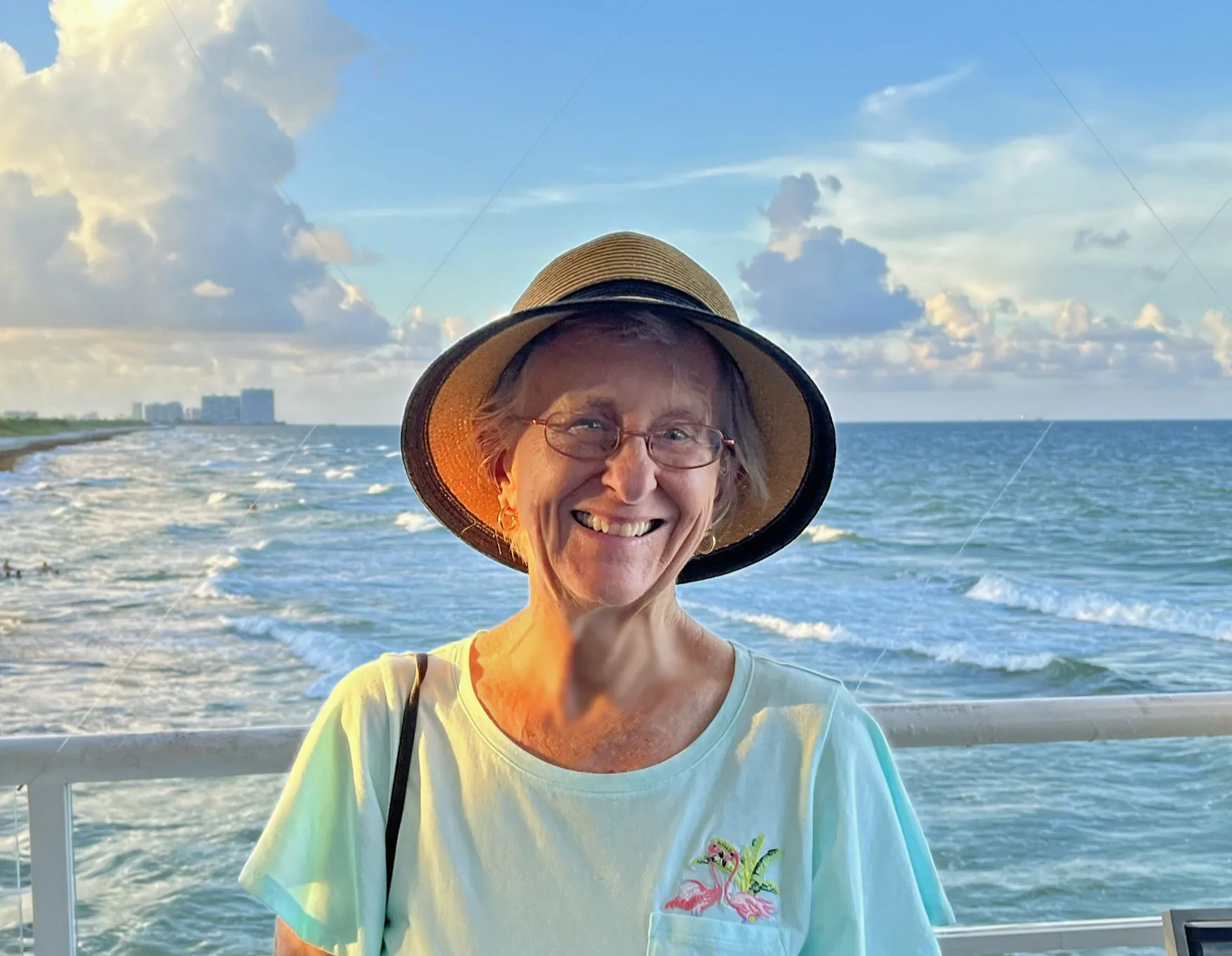
The author, Bonnie Gross, travels with her husband David Blasco, discovering off-the-beaten path places to hike, kayak, bike, swim and explore. Florida Rambler was founded in 2010 by Bonnie and fellow journalist Bob Rountree, two long-time Florida residents who have spent decades exploring the Florida outdoors. Their articles have been published in the Sun Sentinel, the Miami Herald, the Orlando Sentinel, The Guardian and Visit Florida.

Elizabeth Maxwell
Monday 10th of July 2023
Thank you great reading. Loved reading this going to Georgia in a month plan on taking A1A.
Bob Tramposh
Monday 18th of April 2022
My wife and I have been S. Florida residents for many years, and have only recently started exploring the “real” beauty of NE Florida. This article was wonderfully written and I cannot tell you how much we appreciate it. Very anxious to visit all of the places mentioned in the article. Thank you! Bob Tramposh
Bill MacDonald
Saturday 6th of February 2021
Great article... Hope people see, and read it... Most definitely a beautiful part of the state... Part of the real Florida.